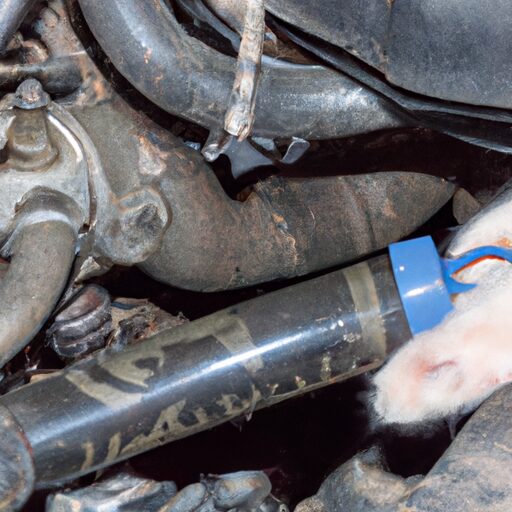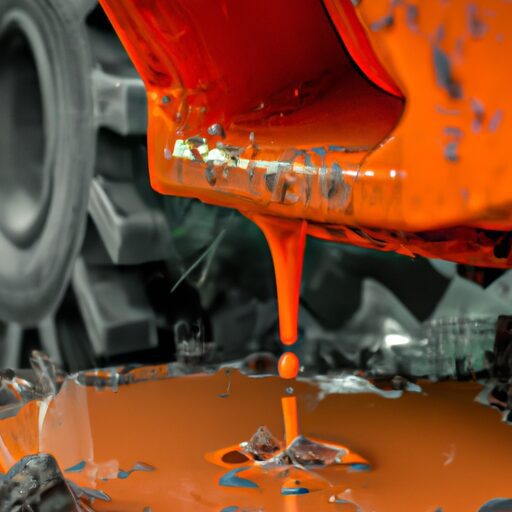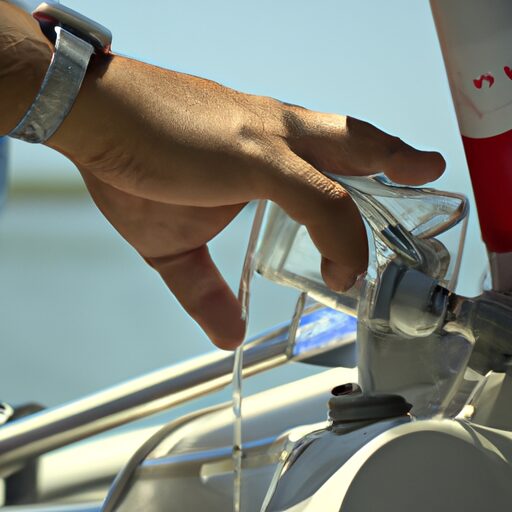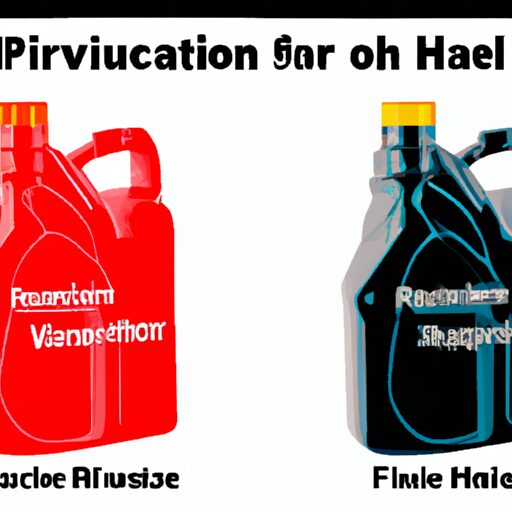Can You Mix Red And Clear Hydraulic Fluid
In the world of hydraulic systems, the compatibility and interchangeability of different types of hydraulic fluids is a topic of great importance. One might wonder whether it is possible to mix red and clear hydraulic fluid, as the colors suggest some level of distinction between them. This article aims to explore this question in a technical, precise, and detailed manner.
To begin with, it is crucial to understand the various types of hydraulic fluids available in the market. Each type possesses distinct chemical compositions and additive packages tailored for specific applications. Mixing different fluids can potentially lead to adverse consequences that may compromise system performance and reliability.
Manufacturer recommendations play a crucial role in determining whether mixing red and clear hydraulic fluid is permissible or not. Moreover, one must consider the potential effects on system components such as seals, hoses, valves, and pumps when contemplating fluid mixing.
Contamination concerns are another aspect that deserves attention as mixing incompatible fluids can introduce foreign particles or degrade existing additives present in each individual fluid. Consequently, flushing and replacing hydraulic fluid may be necessary to restore optimal system functioning.
Given these complexities surrounding the mixing of red and clear hydraulic fluid, seeking professional advice becomes imperative for those looking to maintain their system’s integrity while ensuring its efficient operation.
Understanding Different Types of Hydraulic Fluids
Understanding the distinctions between various hydraulic fluids is crucial in order to make informed decisions about their compatibility and avoid potential complications. Hydraulic fluid properties play a significant role in determining the effectiveness and longevity of hydraulic systems. Different types of hydraulic fluids have unique characteristics, such as viscosity, lubricity, thermal stability, and corrosion resistance. These properties influence the overall performance of the system and can affect its efficiency, reliability, and lifespan.
Choosing the right hydraulic fluid involves considering factors such as temperature range, operating pressure, equipment specifications, and manufacturer recommendations. It is essential to select a fluid that meets these requirements to ensure optimal system operation. Failure to do so can result in decreased performance or even damage to the components.
The potential risks of mixing hydraulic fluids should be taken into account when considering any changes in fluid type or when adding supplemental fluids. Mixing incompatible fluids can lead to chemical reactions that alter their properties and compromise system functionality. In addition, combining different types of fluids may result in variations in viscosity or lubrication capabilities, leading to increased wear on components or reduced efficiency.
Understanding these implications is vital for maintaining the integrity of hydraulic systems and preventing costly repairs or downtime. Therefore, it is important to carefully evaluate compatibility before introducing any changes or additions to hydraulic fluid composition without compromising system integrity.
The Potential Risks of Mixing Hydraulic Fluids
Examining the potential hazards of combining different types of hydraulic fluids can be likened to navigating through treacherous waters without a compass. The consequences of mixing incompatible fluids can be severe and lead to detrimental effects on the hydraulic system. One major concern is the occurrence of chemical reactions between the fluids, which can result in various issues such as corrosion, oxidation, and degradation of seals. These reactions may compromise the performance and longevity of the system components.
To evoke an emotional response in the audience, consider the following unordered bullet list:
- Catastrophic failure leading to costly repairs or replacements
- Increased risk of leaks and fluid contamination
- Reduced efficiency and loss of system functionality
- Impaired lubrication properties affecting critical components
- Safety hazards due to compromised system reliability
Understanding these potential hazards underscores the importance of adhering to manufacturer recommendations regarding hydraulic fluid compatibility. Following these guidelines ensures that only compatible fluids are mixed, minimizing risks and maximizing system performance. Transitioning into the subsequent section about ‘manufacturer recommendations,’ it is crucial to explore how adherence to these recommendations can mitigate potential hazards effectively.
Manufacturer Recommendations
Manufacturer recommendations play a pivotal role in mitigating the potential hazards associated with mixing different types of hydraulic fluids. To ensure optimal performance and longevity of hydraulic systems, it is crucial to adhere to manufacturer specifications regarding fluid compatibility. Manufacturers typically conduct extensive testing to determine which fluids are suitable for use together and provide detailed guidelines on proper fluid selection.
One key aspect of manufacturer recommendations is compatibility testing. This involves evaluating the behavior of different fluid types when mixed, including their chemical reactions, stability, and overall performance. By conducting such tests, manufacturers can identify any potential issues that may arise from mixing incompatible fluids. These recommendations are based on scientific data and empirical evidence gathered during rigorous testing procedures.
Following manufacturer specifications is essential because using incompatible fluids can have detrimental effects on system components. For instance, mixing red and clear hydraulic fluids that are not designed to be compatible can result in decreased lubrication efficiency, reduced seal integrity, increased wear and tear on components, and even system failure. Therefore, it is crucial to carefully review the manufacturer’s guidelines before adding or changing hydraulic fluids in order to prevent costly damage or safety risks.
In summary, adhering to manufacturer recommendations regarding fluid compatibility is vital for maintaining the optimum performance of hydraulic systems. Compatibility testing conducted by manufacturers provides valuable insights into how different fluid types interact when mixed together. Failure to follow these specifications can lead to significant negative effects on system components.
Effects on System Components
The effects of using incompatible fluids in hydraulic systems can lead to decreased lubrication efficiency, reduced seal integrity, increased wear and tear on components, and even system failure. Firstly, when incompatible fluids are mixed, their lubricating properties may be compromised. The viscosity and additives of the fluids may not be compatible, resulting in inadequate lubrication of system components such as valves, pistons, and cylinders. This can lead to increased friction and heat generation within the system.
Secondly, the seals in hydraulic systems are designed to work with specific types of fluid. When incompatible fluids are used, they can cause swelling or degradation of the seals over time. This compromises their ability to maintain a proper seal between moving parts and can result in leaks or loss of pressure.
Lastly, mixing red and clear hydraulic fluids could potentially damage the hydraulic pump. The pump relies on a consistent flow of fluid for proper operation. Incompatible fluids may have different chemical compositions that can cause corrosion or clogging within the pump’s internal components.
In summary, mixing red and clear hydraulic fluids can have detrimental effects on seals’ integrity and cause potential damage to the hydraulic pump. These issues can result in decreased lubrication efficiency, increased wear on components, and ultimately system failure if not addressed promptly.
Moving forward into the next section about contamination concerns…
Contamination Concerns
Contamination concerns in hydraulic systems encompass several key points. The introduction of foreign particles into the system can have detrimental effects on its performance and overall reliability. These particles can cause blockages, damage to components, and increased wear due to reduced lubrication and increased friction. Therefore, it is crucial to implement proper filtration and maintenance practices to minimize contamination risks and ensure optimal operation of the hydraulic system.
Introduction of Foreign Particles
Introduction of foreign particles into a hydraulic system can have detrimental effects on its performance, as it disrupts the smooth operation of components and compromises the overall efficiency of the system. Foreign particle contamination can lead to various issues such as increased wear and tear, reduced lubrication, and increased friction.
The presence of foreign particles in hydraulic fluid can result in accelerated component wear, leading to premature failure. The particles act as abrasive agents, causing damage to critical surfaces and reducing the lifespan of components. Additionally, these contaminants can clog filters and restrict flow passages, further impeding the functionality of the system.
Moreover, foreign particles interfere with proper lubrication within the hydraulic system. Lubricating fluids are designed to form a protective film between moving parts, reducing friction and minimizing wear. However, when contaminated with foreign particles, this lubricating film becomes compromised. As a result, friction increases between components, leading to inefficiencies and potential overheating.
In conclusion, foreign particle contamination significantly affects hydraulic systems by diminishing their performance through accelerated wear and tear, reduced lubrication capabilities, and increased friction. These issues highlight the importance of maintaining clean hydraulic fluid for optimal system functioning. Transitioning into ‘reduced lubrication and increased friction,’ these effects ultimately contribute to decreased overall efficiency in hydraulic systems.
Reduced Lubrication and Increased Friction
Reduced lubrication and increased friction in hydraulic systems can lead to diminished performance and compromised efficiency. Inadequate lubrication can result in excessive wear on critical components, leading to premature failure of the system. Increased friction between moving parts further exacerbates this issue, causing additional stress and heat generation. These factors contribute to a higher risk of hydraulic system failures and increased maintenance costs.
To illustrate the impact of reduced lubrication and increased friction, consider the following table:
| Effects of Reduced Lubrication | Effects of Increased Friction |
|---|---|
| Increased component wear | Elevated operating temperatures |
| Decreased system reliability | Reduced overall efficiency |
| Higher risk of system failure | Increased energy consumption |
| Elevated maintenance costs | Decreased lifespan |
Understanding these consequences highlights the importance of proper lubrication and friction control in hydraulic systems. To address these issues, flushing and replacing hydraulic fluid is often necessary for maintaining optimal system performance and preventing costly repairs.
Flushing and Replacing Hydraulic Fluid
Flushing and replacing hydraulic fluid is a crucial maintenance procedure for optimal system performance. The flushing process involves removing the existing fluid from the hydraulic system and replacing it with fresh fluid. This ensures that any contaminants or impurities present in the old fluid, such as dirt, debris, or moisture, are eliminated.
Regular maintenance of hydraulic systems offers several benefits. Firstly, it helps to maintain proper lubrication throughout the system, reducing friction and wear on components. Secondly, it prevents the buildup of harmful deposits that can clog filters and restrict flow. Thirdly, regular flushing and replacement of hydraulic fluid helps to remove any air bubbles or cavitation that may have formed within the system.
To ensure an effective flushing process, certain steps should be followed:
- Identify the correct type of hydraulic fluid suitable for your specific system.
- Drain all existing fluid from reservoirs, cylinders, hoses, and other components.
- Flush the system using a cleaning solution specifically designed for hydraulic systems.
- Rinse thoroughly with clean fluid to remove any remaining contaminants.
- Refill the system with fresh hydraulic fluid according to manufacturer specifications.
Seeking professional advice from experts in hydraulics can provide valuable insights into specific maintenance requirements based on your unique system configuration. Such guidance can help optimize performance and extend the lifespan of your hydraulic equipment without compromising safety or efficiency.
Seeking Professional Advice
Seeking professional advice from hydraulic experts can provide valuable insights into specific maintenance requirements and enhance the overall performance and longevity of your hydraulic equipment. Professionals with expertise in hydraulics possess in-depth knowledge about the various aspects of hydraulic systems, including fluid compatibility. Their guidance can help prevent costly mistakes that may arise from mixing incompatible fluids.
When it comes to hydraulic fluid, compatibility issues must be carefully considered. Mixing different types or brands of fluid without proper knowledge can lead to detrimental effects on system components and performance. Hydraulic professionals can analyze the composition of the existing fluid and recommend suitable alternatives if necessary. They will consider factors such as viscosity, additives, temperature range, and pressure requirements to ensure optimal functioning.
To further illustrate the importance of seeking professional advice regarding hydraulic fluid compatibility, refer to the following table:
| Fluid Type | Compatibility |
|---|---|
| Red Fluid | Compatible |
| Clear Fluid | Compatible |
| Mixed Fluid | Incompatible |
As shown in the table above, red and clear fluids are individually compatible with hydraulic systems. However, mixing these two fluids together is not recommended due to potential compatibility issues.
In conclusion, consulting professionals with expertise in hydraulics is crucial for ensuring proper maintenance of your equipment. Their technical knowledge helps identify potential problems related to fluid compatibility and provides appropriate solutions for enhanced performance and longevity.
Frequently Asked Questions
Can I mix red and clear hydraulic fluid if they have the same viscosity grade?
Mixing red and clear hydraulic fluid, even if they have the same viscosity grade, is discouraged due to potential consequences. Manufacturers typically recommend against mixing different types of hydraulic fluids to avoid compatibility issues that may compromise system performance and lead to equipment damage.
What are the consequences of mixing red and clear hydraulic fluid in terms of performance and durability?
Mixing red and clear hydraulic fluid can have detrimental consequences on equipment performance. The mixed fluids may lead to decreased lubrication, increased wear and tear, reduced system efficiency, and potential damage to hydraulic components.
Are there any specific manufacturer recommendations for mixing red and clear hydraulic fluid?
Manufacturer recommendations for mixing red and clear hydraulic fluid vary. Some manufacturers advise against mixing due to compatibility issues, as it can lead to performance degradation and reduced durability of the system.
Can mixing red and clear hydraulic fluid lead to contamination issues in the system?
Mixing red and clear hydraulic fluid can lead to potential chemical reactions, affecting system components and seals. Contamination issues may arise, compromising the functionality and reliability of the hydraulic system.
Is it necessary to completely flush and replace the hydraulic fluid if red and clear fluids are accidentally mixed?
Flushing requirements should be considered if red and clear hydraulic fluids are accidentally mixed. Compatibility concerns may arise as the interaction of different fluid types can lead to system contamination, compromising its performance and necessitating complete fluid replacement.
Conclusion
In conclusion, it is crucial to adhere to manufacturer recommendations when dealing with hydraulic fluids. Mixing red and clear hydraulic fluid can have potential risks and adverse effects on system components due to different chemical compositions. Contamination concerns also arise when mixing fluids, leading to compromised system performance. To address this issue, flushing and replacing the hydraulic fluid may be necessary. Seeking professional advice is recommended for proper guidance in handling hydraulic fluids. As the saying goes, "Better safe than sorry," it is essential to prioritize caution and precision in maintaining hydraulic systems.







